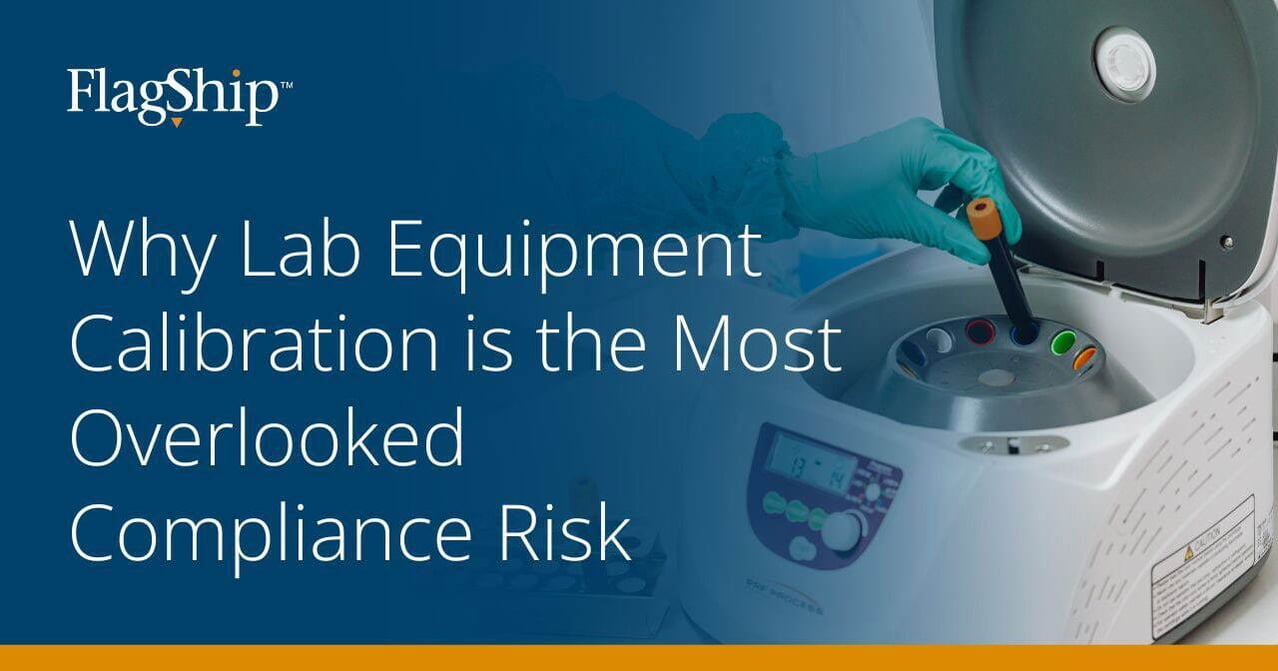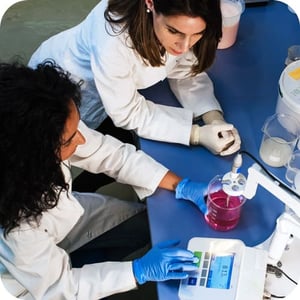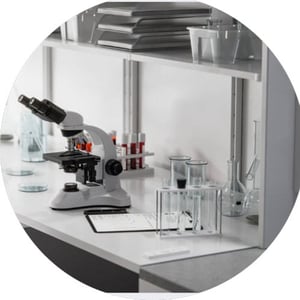
We see many lab managers treat calibration like a checkbox. Just something to be done before an audit, or worse, only when equipment starts misbehaving. But calibration is not a formality. It’s a cornerstone of lab integrity, and when it’s handled poorly or inconsistently, the risks escalate beyond inaccurate data.
In regulated lab environments, lab equipment calibration is tied directly to compliance, productivity, and scientific credibility. Skipping it, or doing it in-house without proper documentation, can erode data quality, derail experiments, and expose labs to regulatory scrutiny.
If you’re still viewing calibration as a minor technical risk, perhaps it’s time to take a closer look.
Calibration is a Strategic Risk Factor
In biotech and life sciences labs, small inaccuracies can have massive downstream consequences. A scale that’s off by just 0.5% may seem harmless until you realize it’s being used to weigh a reagent that controls reaction yield in a critical study.
Improperly calibrated instruments introduce invisible risk:
- Contaminated results that aren’t caught until late-stage review
- Failed batch records due to unverified measurements
- Delayed approvals or rework cycles from poor audit readiness
- Erosion of trust in lab outputs, both internally and externally
And, while most labs know calibration is “important”, far fewer treat it like the strategic safeguard it really is.
The Audit Problem: Calibration Gaps Don’t Stay Hidden
Regulatory bodies like the FDA, EPA, and ISO aren’t just checking that you’re equipment works, they’re checking that it was validated, documented, and traceable to national or international standards. If you can’t prove that specific instruments were within tolerance on a given date, the data it generated could be considered invalid.
Common audit findings include:
- Lapsed calibration schedules with no justification
- Missing certificates of calibration
- Use of non-accredited providers without appropriate oversight
- Internal calibrations done without traceable standards
When calibration lapses show up in an audit, it’s not just a slap on the wrist. It can lead to 483 observations, delayed approvals, or, even worse, having to repeat study phases due to compromised data.
In-house vs Accredited Calibration: What’s the Real Difference?
Some labs rely on in-house teams to perform basic equipment calibration. While this can work for routine checks, it rarely meets the standards required for regulated environments.
The difference between self-performed and accredited calibration comes down to:
- Traceability: Accredited providers' calibration using standards linked to NIST or other national bodies.

- Documentation: Full calibration certificates with uncertainty calculations, tolerances, and environmental conditions.
- Scope: Ability to calibrate across multiple measurement domains (e.g. mass, temperature, time)
- Accountability: External audits and quality control built into the provider’s own accreditation (e.g., ISO/IEC 17025)
Using a certified calibration service isn’t just about ticking a box. It’s about knowing your instruments are performing within spec and having the documentation to prove it when it matters.
Flagship’s Calibration Approach is Built for Regulated Labs
Flagship Lab Services offers ISO 17025-accredited calibration services across a wide range of laboratory equipment. Whether you're running high-throughput assays or managing bioreactors in a GMP environment, our calibration protocols are designed to support both scientific accuracy and regulatory compliance.
What sets us apart:
- Mobile technicians in the leading biotech hubs for on-site calibration with minimal disruption
- Depot calibration for complex instruments or high-volume programs
- Full documentation with certificates tied to national standards
- Integrated service agreements that include calibration, PMs, and repair
We support Lab Managers who don’t want surprises, whether it’s during audits, experiments, or budget planning.
What Equipment Should be Calibrated?
If you’re not sure what lab equipment should be calibrated (or how often), you’re not alone. But assuming “only critical” instruments need attention is a common and costly mistake.
Here is a partial list of lab equipment and instruments that require regular, documented calibration:
- Balances & Scales
- Centrifuges
- Autoclaves
- Thermometers & Temperature Probes
- pH Meters

- Incubators
- Data Loggers
- Spectrophotometers
- Pipettes
How often? That depends on:
- Manufacturer recommendations
- Frequency of use
- Impact of drift on results
- Your lab’s SOPs and regulatory context
Flagship helps labs build calibration schedules that align with their risk profile, not just the calendar.
The Bottom Line? Calibration isn’t a Line Item. It’s a Lifeline.
Labs that treat calibration as a tactical task are often blindsided by failures they could have prevented. Labs that treat it as a strategic function avoid these failures and run more efficiently, confidently, and with credibility.
In a landscape where compliance expectations are rising, documentation gaps are embarrassing and expensive.
Before your next audit (or your next failed assay), ask yourself:
- Are we calibrating everything that matters?
- Can we prove it?
- Are we managing risk, or just reacting to it?
If the answers aren’t clear, it’s time to bring calibration into focus.
Not sure your calibration vendor measures up?
Use our vendor scorecard to evaluate your service partner before you renew.





Leave a Comment